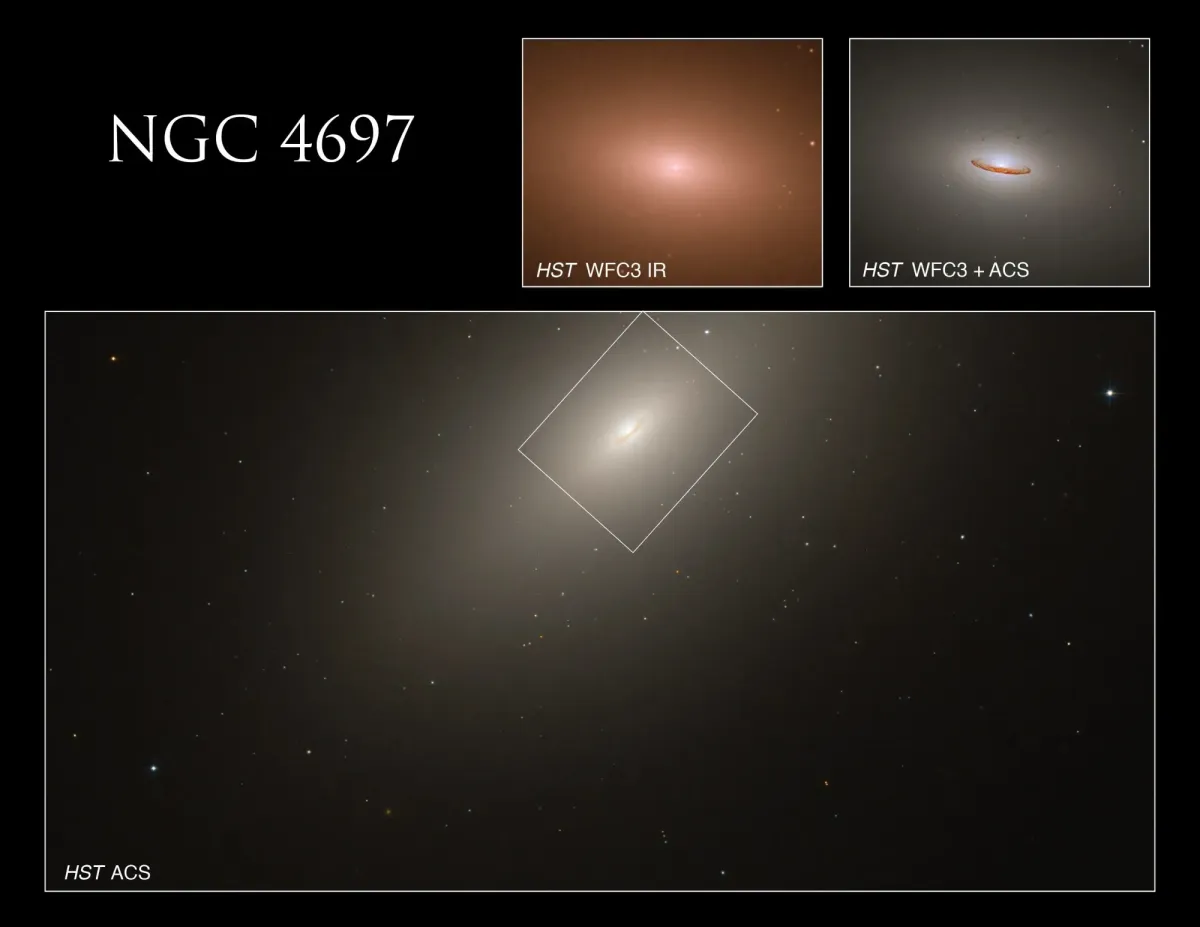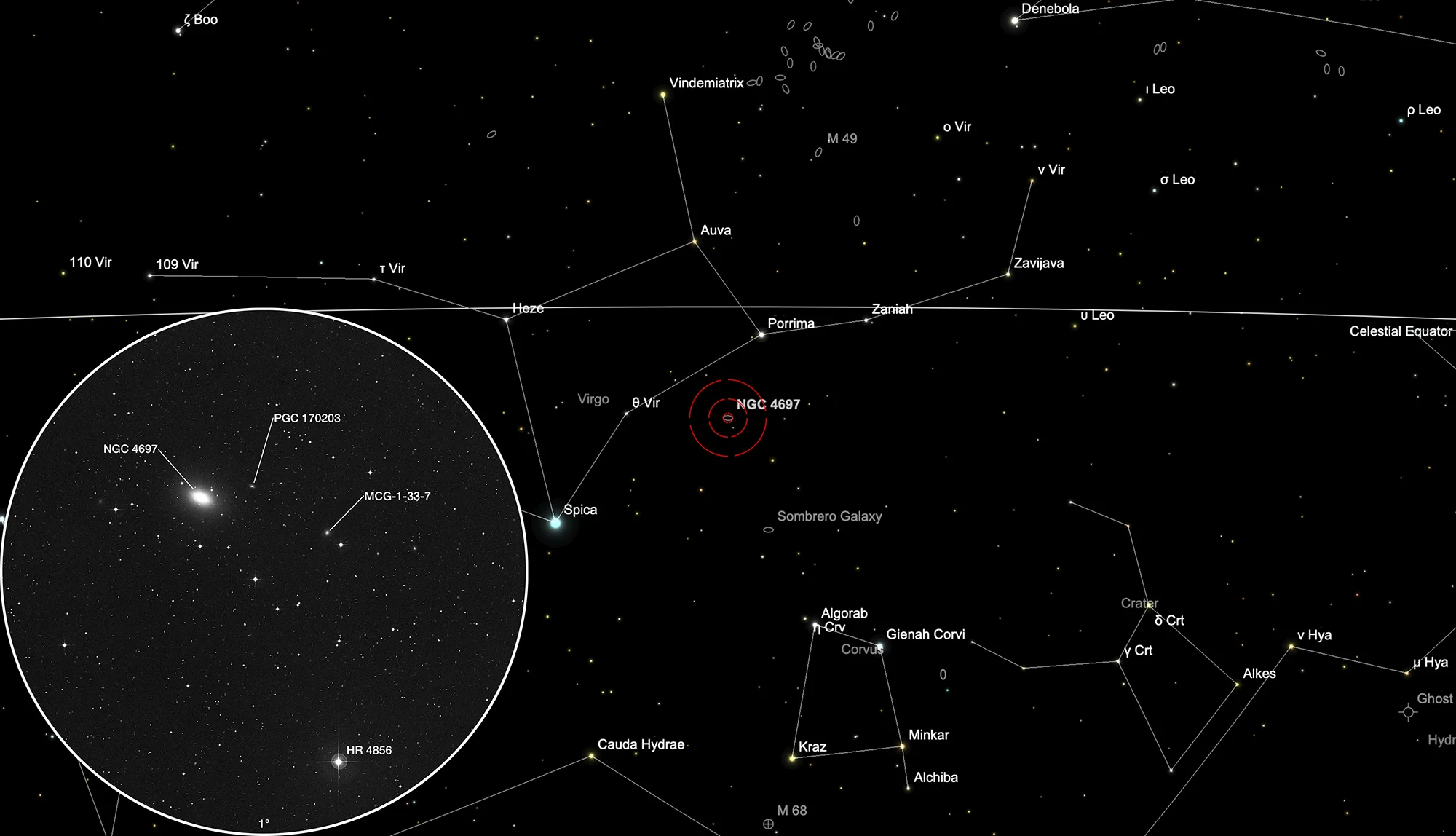Galaxy NGC 4697

History
William Herschel sweeped with his 18.7-inch reflecting telescope the sky and on 24 April 1784 and found a bright nebula which he logged as I 39 and described as follows: «Very bright, very large, suddenly much brighter in the middle, resolvable nucleus.» [463]
Physical Properties
NGC 4697 is the primary member of the NGC 4697 group of galaxies. This massive elliptical galaxy is slightly larger than the Andromeda galaxy and distorts its neighbors with its gravitational influence. By studying the motion stars close to the galaxy’s centre one was able to identify a supermassive black hole with roughly 100 million solar masses in the heart of the galaxy. [261]
| Designation | NGC 4697 |
| Type | Gx (E6) |
| Right Ascension (J2000.0) | 12h 48m 35.8s |
| Declination (J2000.0) | -05° 48' 00" |
| Diameter | 7.2 × 4.7 arcmin |
| Photographic (blue) magnitude | 10.1 mag |
| Visual magnitude | 9.2 mag |
| Surface brightness | 13.0 mag·arcmin-2 |
| Position Angle | 70° |
| Redshift (z) | 0.004140 |
| Distance derived from z | 17.49 Mpc |
| Metric Distance | 11.650 Mpc |
| Dreyer Description | vB, L, lE 45° ±, smbMN |
| Identification, Remarks | WH I 39; h 1436; GC 3227; MCG -1-33-10; UGCA 300 |
Finder Chart
The galaxy NGC 4697 is located in the constellation Virgo. It can best be observed from December to September.
